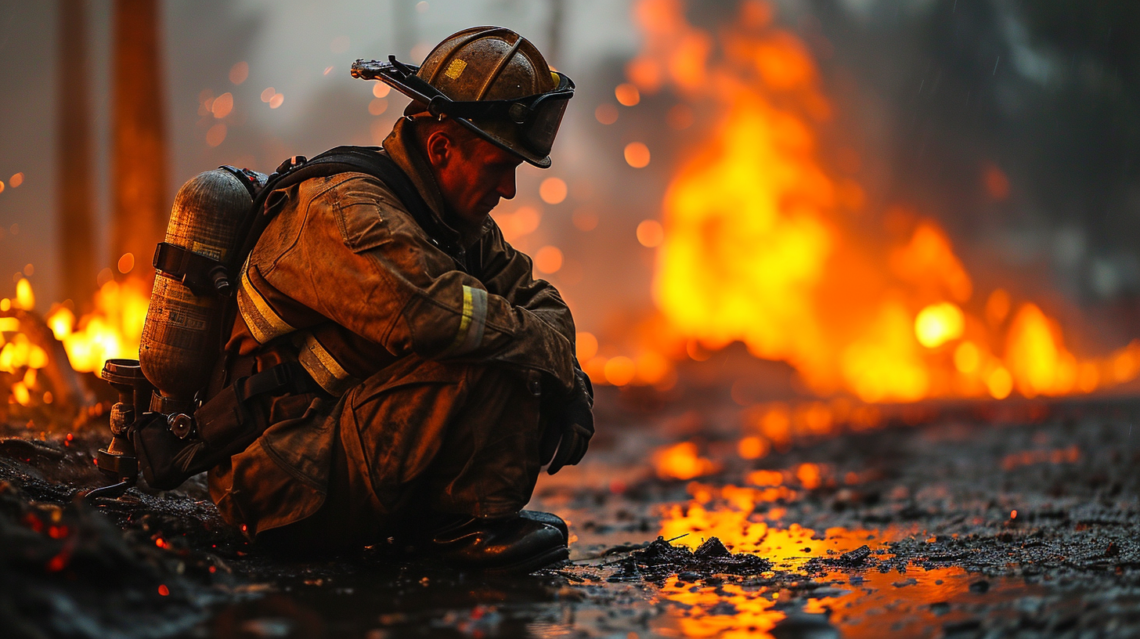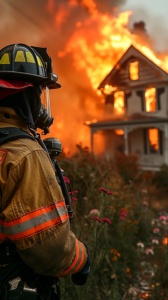
Hidden Health Hazards for Firefighters
In the line of duty, firefighters confront not just blazing infernos but also insidious health risks, notably an increased vulnerability to cancer. This article delves into the multifaceted health challenges Canadian firefighters face, underlining the importance of both prevention and intervention in safeguarding their well-being.
The Perilous Profession of Firefighting
Firefighting, a profession synonymous with bravery and selflessness, entails more than extinguishing fires and emergency response. These heroes are frequently the first on the scene of emergencies, providing crucial care in critical moments. However, their heroic acts come at a cost – a heightened exposure to physical and toxic dangers.
Firefighting as a Known Carcinogen
In a groundbreaking move, the International Agency for Research on Cancer, in June 2022, classified firefighting as a known human carcinogen. This classification acknowledges the grim reality of the profession’s health risks. From 2005 to 2016, a staggering 86% of occupational fatality claims among Canadian firefighters were cancer-related. These statistics paint a harrowing picture of the profession’s hidden dangers.
The Cancer Risk Among Firefighters
Studies reveal that firefighters have a 9% higher likelihood of receiving a cancer diagnosis and a 14% increased risk of cancer mortality compared to the general public. These figures highlight the need for enhanced safety measures and health monitoring for firefighters.
Unmasking the Carcinogenic Hazards
The carcinogenic risk in firefighting is largely attributed to exposure to toxic substances. When responding to fires, firefighters are exposed to a cocktail of harmful chemicals, including but not limited to benzene, formaldehyde, and polycyclic aromatic hydrocarbons. These substances, often released from burning materials, are known carcinogens.
 Prevention and Protection Strategies
Prevention and Protection Strategies
- Enhanced Personal Protective Equipment (PPE): The development and use of advanced PPE can significantly reduce exposure to harmful substances. This includes self-contained breathing apparatuses (SCBAs) and protective clothing that offers better shielding against carcinogens.
- Decontamination Protocols: Implementing rigorous on-scene and post-fire decontamination procedures can minimize the absorption of toxic substances. Firefighters should be trained in effective decontamination techniques.
- Health Monitoring and Screening: Regular health screenings and monitoring for firefighters can aid in early detection of cancer and other health issues. These should include comprehensive physical exams and cancer screenings.
- Education and Awareness: Increasing awareness about the risks and promoting education on safe practices are crucial. Firefighters should be well-informed about the potential health hazards and ways to mitigate them.
- Research and Policy Advocacy: Ongoing research into the health risks faced by firefighters and advocacy for policies that support their health and safety are vital.
A Call for Action
The elevated cancer risk among firefighters is a clarion call for action. It is imperative that we adopt a multi-pronged approach, encompassing better protective equipment, stringent decontamination processes, regular health screenings, education, and robust research. As a society, we owe it to our firefighters to ensure their safety and health as they selflessly protect ours. Their heroism should not come at the cost of their well-being. By implementing these strategies, we can aim to shield those who shield us, turning the tide against the hidden health hazards of firefighting.

